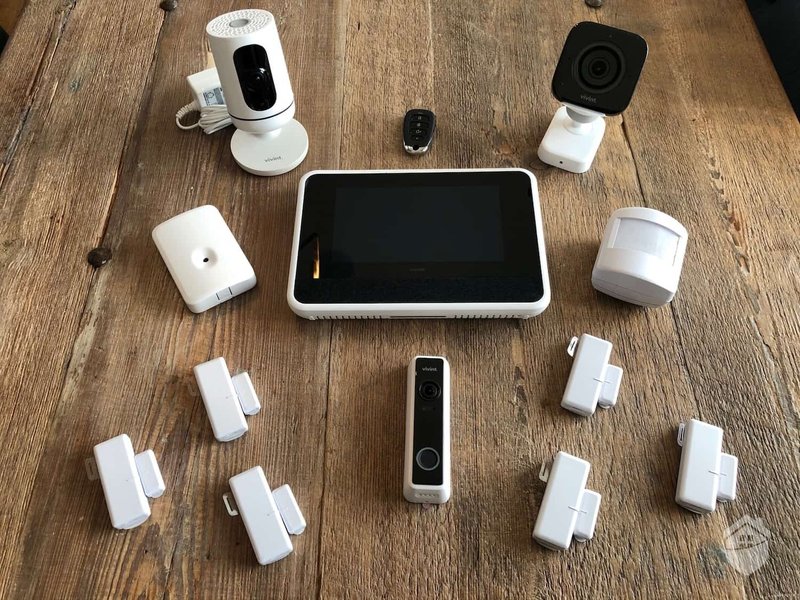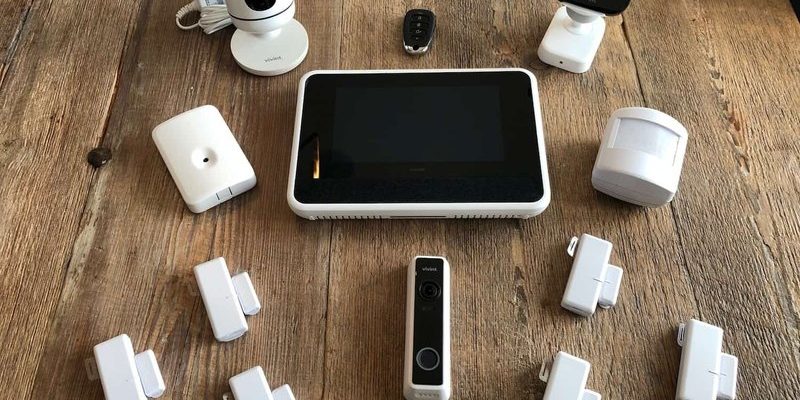
The truth is, most of us don’t think twice about who—or what—could be tapping into our remote’s code. Vivint is a big name in home security and automation, which means their smart remotes are supposed to keep bad guys out, not let them in. Still, no gadget is bulletproof. If you’re seeing weird symptoms, there’s a chance something fishy is going on. But don’t panic yet—let’s break it down and troubleshoot your Vivint remote together.
Unusual Vivint Remote Behavior: What Counts as “Hacked”?
Let me explain what “getting hacked” really means here. For your Vivint smart remote, hacking doesn’t always look like a movie scene with a hooded villain in a dark basement. Sometimes, the signs are subtle—like your alarm system turning off without your say-so or your garage door opening on its own. Even something as simple as the remote not syncing with your hub could be a red flag.
You might be wondering: are these glitches, or is someone actually meddling with my system? Here’s the thing—electronics can be moody, but true hacking usually comes with patterns. Maybe you notice settings changing after you’ve already locked up for the night. Or someone else’s remote suddenly controls your stuff. These are moments to pause and pay attention.
Common symptoms to watch for:
- Remote commands happening with no one touching the remote
- Lights, locks, or alarms turning on/off randomly
- Devices unpairing or not syncing without warning
- System logs show unknown access times or locations
Honestly, if your remote’s been behaving strangely more than once, don’t shrug it off. It could be a battery issue, a syncing problem, or—less likely—someone snooping around your smart home system.
Common Causes Behind Vivint Remote Problems
Not every odd behavior points to a hacker. Sometimes the simplest explanation is true: batteries die, connections drop, tech hiccups happen. Before jumping to the worst-case scenario, let’s walk through what usually trips up a Vivint remote.
First off, battery problems are classic. A weak battery can make your remote lag or fail to send commands. If it feels like your remote has a mind of its own, pop in a new battery and see if that solves it. You might be surprised how often a fresh battery brings everything back in sync.
Next, there’s the matter of signal interference. Your Vivint remote uses wireless signals—kind of like a mini Wi-Fi router. Too many gadgets on the same frequency (like baby monitors, cordless phones, or even a thick wall) can muddy the waters. If your remote hasn’t been syncing or keeps dropping the connection, look around for possible obstacles.
Finally, software glitches and sync errors can make your system act possessed. Sometimes, a failed code update or a reset that didn’t finish can cause the remote to “forget” its pairing with your control panel. It’s annoying, but honestly, it’s not always a sign of hacking.
It’s easy to panic at the first sign of trouble. But often, a simple fix is all you need to get your Vivint smart remote back on track.
How To Check If Your Vivint Remote Is Actually Hacked
Let’s say you’ve replaced the battery, checked your Wi-Fi, and there’s still weird stuff happening. Your next step is to play detective. Here’s how you can check if your remote really is compromised and not just being dramatic.
Step 1: Review Your Vivint App Activity Log
Vivint’s system tracks every action. Pull up the history in your mobile app or main control panel. Look for command events or access times that don’t match up with your routine. If you see commands logged during times nobody was home, or from unknown devices, you’ve got a red flag.
Step 2: Inspect Device Pairing
Sometimes, someone can “pair” a new remote to your system without you knowing—especially if your hub wasn’t properly secured. Check your paired devices through the Vivint app or the on-wall panel. Each registered remote and smart device should be familiar to you.
Step 3: Test Remote Response
Does your remote control a neighbor’s Vivint system, or vice versa? That’s a sign your wireless codes might have been copied or intercepted. This is rare, but it can happen if your remote was paired in public or if code security is weak.
If you find anything odd during these checks, it’s time to take action—don’t wait for things to get worse.
Essential Fixes for a Suspected Hacked Vivint Smart Remote
So, you’ve spotted something fishy. What now? The good news is: you can usually take back control with a few simple fixes. Here’s what I’d do if my Vivint remote seemed hacked or out of sync.
Start With a Full Reset
Most Vivint remotes have a reset button, often hidden inside the battery compartment. To reset your remote, remove the battery, press and hold the reset button (using a paperclip if needed), then pop the battery back in. This wipes out old pairings and clears glitches. It’s like giving your remote a fresh start.
Re-Pair Your Remote
After a reset, you’ll need to re-sync your remote with your Vivint hub. Go to the main panel or app, select “Add Device” or “Pair Remote,” and follow the prompts. Make sure you’re pairing in a secure environment—don’t do this while you’re out in the open or at a neighbor’s house.
Update Your System Code
Change your system’s security code and, if possible, update any PINs associated with remote access. This keeps out anyone who might have figured out your previous codes.
If you’re not sure about any of these steps, Vivint’s support team is a call away—and honestly, that’s what they’re there for.
Strengthening Security: Prevent Future Vivint Remote Hacks
Getting hacked once is more than enough. Here’s how to make your remote—and your whole home—harder to break into next time.
- Keep your system updated: Vivint regularly releases software updates for better security. Don’t snooze those alerts—install updates when prompted.
- Change default codes and passwords: Never leave your system using default codes or PINs. Make them unique, unpredictable, and not tied to personal info.
- Pair remotes privately: Sync your remote inside your home, far from prying eyes. Don’t pair new remotes while sitting in your driveway.
- Limit remote sharing: Only pair remotes you actually use, and unpair any you don’t recognize or need anymore.
And honestly, don’t overlook the power of good old-fashioned observation. If you notice new devices paired to your Vivint hub, investigate immediately.
Comparing Vivint Remotes With Universal Remotes for Security
You might be wondering if a universal remote would be a safer (or riskier) bet. Here’s the thing: Vivint smart remotes are designed for their own security ecosystem. Universal remotes, on the other hand, are “one-size-fits-all”—handy for your TV, not so much for your home security.
The main difference is that Vivint remotes use encrypted pairing and proprietary code, which means hacking one is a tall order compared to generic remotes. Universal remotes sometimes lack strong encryption, making them easier targets if someone’s aiming to break in.
If you want peace of mind, stick with the brand remote and keep it updated. It’s built for the job. Universal options work best for non-security appliances, like entertainment centers.
When To Replace Your Vivint Smart Remote
Sometimes, a remote just can’t be trusted anymore. Here’s how you know it’s time for a replacement:
- The remote refuses to sync or pair, even after resets and fresh batteries.
- Physical damage (cracked casing, exposed wires) leaves the electronics exposed.
- Recurring glitches, even after firmware updates and security patches.
It’s frustrating, and the cost isn’t always fun, but a compromised remote can put your whole smart home at risk. If in doubt, swap it for a new one and safely dispose of the old device so no one else can reuse its code.
Final Thoughts: Protecting Your Vivint Smart Remote and Smart Home
If your Vivint smart remote starts acting up, the last thing you want to do is ignore it. Weird behavior isn’t always a hack, but it’s smart to check, reset, and re-secure your system. Think of your remote as the front door key to your digital house—keep it close, update it often, and don’t loan it out lightly.
Watching for symptoms, following simple fixes, and staying proactive with security updates will keep your Vivint system working the way it should—protecting you, not giving you a headache. Trust your instincts; if something feels off, tackle it early. It’s better to spend ten minutes troubleshooting now than risk bigger problems down the line.
